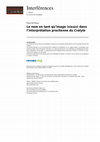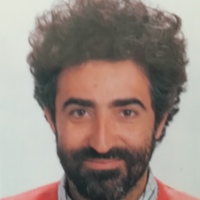Papers by Piera De Piano
Per una definizione del tempo in Aristotele, "Koinonia" 42 (2018), pp. 625-632., 2018
Una nota a margine del volume di L. Ruggiu, "Tempo, coscienza e essere nella filosofia di Aristot... more Una nota a margine del volume di L. Ruggiu, "Tempo, coscienza e essere nella filosofia di Aristotele. Saggio sulle origini del nichilismo", Petite Plaisence, Pistoia 2017.
Interferences Ars Scribendi, Apr 17, 2014
Le nom en tant qu'image (εἰκών) dans l'interprétation proclienne du Cratyle Interférences, 7 | 2014
Gli eroi e la natura demonica di Amore: Proclo interprete di Simposio 201e-204b, in M. Tulli - M. Erler (eds.), Plato in Symposium. Selected papers from the Tenth Symposium Platonicum, Academia Verlag, Sankt Augustin 2016, pp. 476-482., 2016
L'ἀφομοιωτικὴ δύναμις de l'âme et la matière des noms dans le Commentaire du Cratyle de Proclus in J. Halfwassen - T. Dangel - C. O'Brien (ed. by), Seele und Materie im Neuplatonismus/Soul and Matter in Neoplatonism, Universitätaverlag Winter, Heidelberg 2016, pp. 189-209., 2016

Le nom en tant qu'image (εἰκών) dans l'interprétation proclienne du Cratyle, « Interférences [En ligne] », 7 (2014), mis en ligne le 10 juillet 2014, URL : http://interferences.revues.org/4620, 2014
In the 5th century AD, Proclus begins his course of lessons on the Cratylus with the apparent con... more In the 5th century AD, Proclus begins his course of lessons on the Cratylus with the apparent contradiction which closes the Platonic dialogue. Now the exegete finds, as a decisive argument for the solution of this aporia, the iconic nature of language. Reading some passages
of the In Cratylum, the Institutio theologica and the In Parmenidem, it will be clear how the concept of image in Proclus has an ontological nature, as well as semantic, and how, therefore, it can explain not only the natural origin of language but even the existence of incorrect names.
And in fact, through a very original but also faithful Proclean interpretation of the Platonic text, we will realise that, when a thing wants to be the image of another one, it has not to be his copy, but it needs that it has within itself the likeness and the unlikeness at the same time.
lA verItà del lInguAggIo PoetIco nell'esegesI omerIcA dI trAdIzIone neoPlAtonIcA
Book Reviews by Piera De Piano
Giombini, Stefania, Gorgia epidittico. Commento filosofico all’Encomio di Elena, all’Apologia di Palamede, all’Epitaffio, Perugia: Aguaplano, 2012, 286 pp. ISBN 978-88-97738-12-1, 2015









Uploads
Papers by Piera De Piano
of the In Cratylum, the Institutio theologica and the In Parmenidem, it will be clear how the concept of image in Proclus has an ontological nature, as well as semantic, and how, therefore, it can explain not only the natural origin of language but even the existence of incorrect names.
And in fact, through a very original but also faithful Proclean interpretation of the Platonic text, we will realise that, when a thing wants to be the image of another one, it has not to be his copy, but it needs that it has within itself the likeness and the unlikeness at the same time.
Book Reviews by Piera De Piano
of the In Cratylum, the Institutio theologica and the In Parmenidem, it will be clear how the concept of image in Proclus has an ontological nature, as well as semantic, and how, therefore, it can explain not only the natural origin of language but even the existence of incorrect names.
And in fact, through a very original but also faithful Proclean interpretation of the Platonic text, we will realise that, when a thing wants to be the image of another one, it has not to be his copy, but it needs that it has within itself the likeness and the unlikeness at the same time.